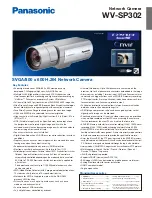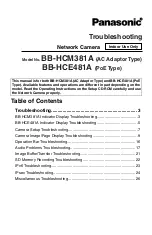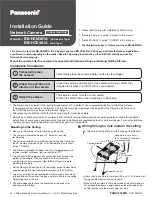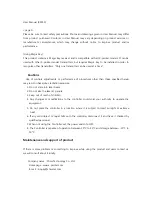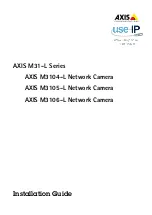
This is a feature of the on-chip colour processing of the camera and does not originate in
MJPEG compression because the artefacts occur with the raw uncompressed YUYV
image stream as well as if the MJPEG were to be used.
This artefact only manifests in regions where no meaningful signal can be obtained
because exposure is such that the bias level of the ADC is not exceeded. As shown in the
middle row of figure 7.3, when a sufficiently long exposure setting is used so as to allow all
pixels to be above the bias level upon readout, the artefact no longer exists.
Making a master flat and master dark for astronomy
Mean averaging (such as is done within the PARD Capture software) is sufficient for
making a master dark and master flat for use with microscopy work. However, for other
types of application (such as in astrophotography) other image combination approaches
may be preferable. Such detailed guidance is outside the scope of this user manual but
there are various texts and free web tutorials on the subject. Keep an eye on the PUMA
Microscope YouTube channel for video tutorials as well. Some introductory links that may
be useful in this regard are as follows:
http://spiff.rit.edu/classes/phys445/lectures/darkflat/darkflat.html
https://core.ac.uk/download/pdf/37772805.pdf
https://www.cfht.hawaii.edu/~baril/Pyxis/Help/flatdarkfield.html
https://www.stsci.edu/instruments/wfpc2/Wfpc2_dhb/wfpc2_ch44.html
http://astro.corlan.net/gcx/html/node7.html
https://github.com/deepskystacker/DSS/releases/tag/4.2.2-Release
Note that the ‘Save as FITS?’ option in PARD Capture exists so you can capture
individual frames using PARD Capture and transfer them to other processing software if
you wish to use the more elaborate image combination processes discussed in some of
the above references.
Unnatural edge sharpening
The AF51 has a ‘Sharpness’ control which is default set to 50 (range 0 to 100). Use of this
default setting can often make images seem crisper for casual illustration purposes
however a high level of sharpening also brings with it unnatural ringing or
overcompensation at sharp edges (figure 7.5) that can cause excessive noise or
otherwise be detrimental to certain image processes (such as deconvolution). For
scientific imaging therefore it is often best to reduce this sharpness setting to zero (or near
zero) so that edges appear more ‘natural’ even if a little soft.
OptArc AF51 Camera Page 93 of 99 User Guide v1.02























